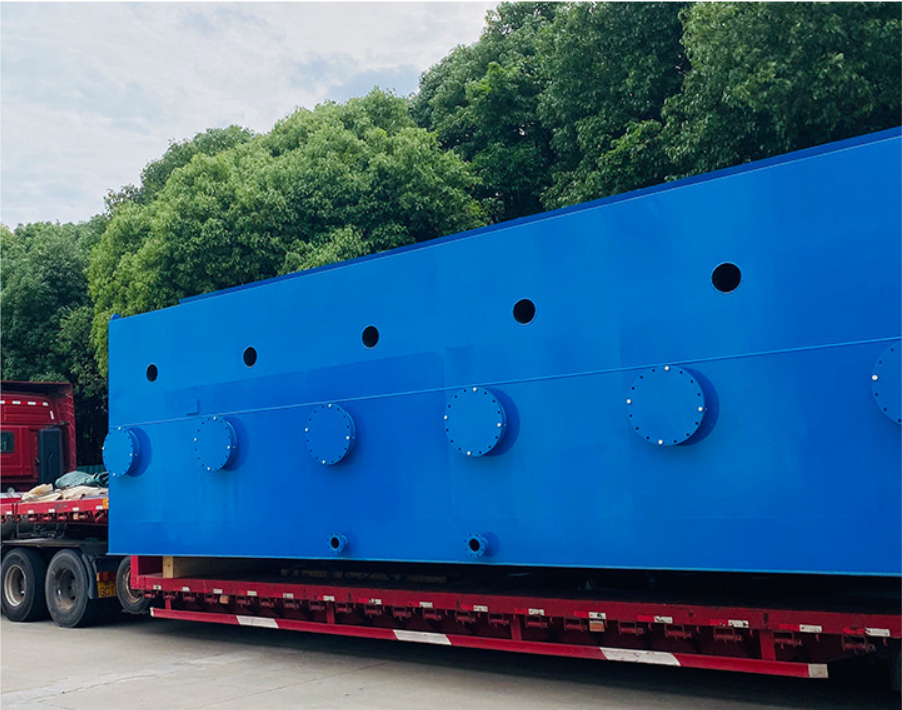Hydrolysis acidification system
Hydrolysis acidification system
$2000-15000
Products Detail
What is hydrolysis and acidification?
The hydrolysis and acidification treatment method is a method between aerobic and anaerobic treatment methods. It can be regarded as the first and second stages of anaerobic treatment, that is, under the action of a large number of hydrolyzing bacteria and acidifying bacteria, insoluble organic matter Hydrolysis into dissolved organic matter converts difficult-to-biodegrade macromolecular substances into easily biodegradable small-molecule substances, or it is a reaction process that causes larger, difficult-to-degrade substances to open rings and chains. Therefore, in a strict sense, the hydrolysis acidification tank is a facultative oxygen tank.
What are the process flows of hydrolysis and acidification?
- Pretreatment: Depending on the characteristics of the sewage, grilles, sedimentation or other forms of pretreatment may be required to remove large particles or floating matter in the sewage.
- Adjust water quality: adjust the pH value, temperature, etc. of sewage to meet the requirements of the hydrolysis and acidification process. For example, the hydrolysis and acidification process is usually carried out at a pH value between 5.5 and 6.5 to obtain a higher hydrolysis (acidification) rate.
- Hydrolysis and acidification reaction: The sewage passes through the hydrolysis and acidification reactor under anaerobic conditions, and the microorganisms in it decompose high molecular organic matter into small molecular organic matter. This step can be achieved using upflow, hybrid or fully mixed hydrolysis reactors
- Microbial action: During the hydrolysis and acidification process, microorganisms such as fermentation bacteria play a leading role in converting floating organic matter and macromolecular substances into soluble organic matter and easily biodegradable small molecule substances.
- Water effluent and sludge discharge: The sewage after hydrolysis and acidification enters the subsequent treatment unit, such as aerobic treatment or anaerobic digestion. At the same time, according to the operation conditions of the hydrolysis acidification tank, sludge discharge operations are performed regularly to maintain the activity and treatment efficiency of microorganisms in the reactor.
- Monitoring and control: Monitor and control the operating parameters of the hydrolysis and acidification tank, such as dissolved oxygen, pH value, temperature, organic matter concentration, etc., to ensure stable operation of the process.
- Post-treatment: Depending on the effluent quality requirements, further treatment may be required, such as sedimentation, filtration, disinfection, etc. to meet discharge standards.
What is the structure of a hydrolysis acidification tank?
(1) Pool body: generally rectangular or circular. The economic height of the hydrolysis and acidification pool is generally between 4 and 6m.
(2) Water distribution system: Water distribution methods include: one pipe and one hole water distribution method, one pipe multi-hole water distribution method, and branch water distribution method.
(3) Effluent collection device: The effluent from the hydrolysis and acidification tank can be collected using a triangular water outlet weir located on the surface of the pool water.
(4) Sludge discharge system: When the sludge in the hydrolysis acidification tank reaches a certain height, the sludge should be discharged. The setting of the sludge discharge height should consider discharging low-activity sludge and preserving high-activity sludge. Normal sludge discharge The point is located in the middle and upper part of the sludge area, and a regular sludge discharge method can be used, and the sludge can be discharged once or twice a day.
Application
- Industrial wastewater treatment: Hydrolysis and acidification technology is widely used in chemical, pharmaceutical, printing and dyeing, and food processing industries. It can effectively decompose refractory organic matter, reduce the concentration of COD and SS, and improve the biodegradability of wastewater, thereby reducing the need for subsequent biochemical treatment. of energy consumption.
- Urban sewage treatment: In urban sewage treatment, hydrolysis and acidification tanks can be used as a pretreatment process to improve the biodegradability of wastewater and reduce the load and energy consumption of subsequent biological treatment.
What are the advantages and disadvantages of hydrolysis and acidification?
- The treatment of sludge does not need to go through the digester. Direct hydrolysis and acidification can quickly hydrolyze the sludge at normal temperature, and finally achieve one-time treatment of sludge.
- The project investment cost is cheap, and daily operation and maintenance are simple and convenient.
- The effluent has no odor, making the sewage treatment plant have a good air environment
- The biodegradability of the effluent has been greatly improved, which is very conducive to subsequent aerobic treatment.



